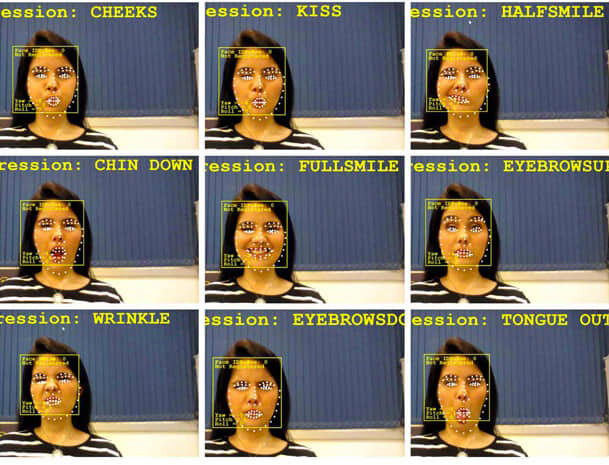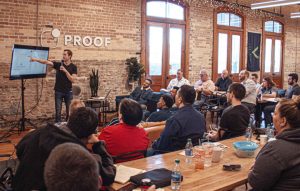Ahh…the Consumer Electronics Show (CES) 2019. Why does it excite 4,500 exhibiting companies and more than 180K attendees from 150 countries? What new gadgets will be unveiled this time? What the pioneering thinkers or the world’s business leaders will be addressing this time in CES 2019? Is there such a thing as a global stage for innovation?
Although CES is celebrating its 52nd year, it is still the go-to destination amongst technophiles. I am sure, till now, you have already gone through some articles regarding CES 2019. But this blog post differs with the focus on cutting-edge technologies of tomorrow. We will see what wonders companies are making by employing artificial intelligence (AI), Internet of Things (IoT), robotics, and data science.
Hoobox Robotics
Now for those 17,700 new spinal cord injury (SCI) registrants every year to current 288,000 people with SCI, as well as one in fifty Americans (that’s about 6 million) who live with some form of paralysis, and one billion people (that’s around 15% of the world population) who live with some form of disability – physical immobility will no more be a limitation.
They can go forward with a ‘kiss,’ turn right with a ‘half-smile,’ turn left with a ‘wrinkling nose,’ and stop wherever they wish with a ‘full-smile.’ Their wheelchair can now move with their facial expressions when they install Wheelie 7.
Wheelie 7, so called because the product takes seven minutes to install, is a kit powered by Intel’s AI for social good and developed by the Brazilian start-up Hoobox Robotics. The Wheelie 7 kit comes with 3D RealSense Depth camera, on-board computer, navigation sensor, electrical accessories, and the latest version of ‘The Wheelie’ software. The kit captures ten different facial expressions, while mounted on a wheelchair, and AI algorithms process them in real-time to control the chair.

Source: www.hoo-box.com
“It’s important to recognize how technology can help people regain mobility and control of their lives. TheWheelie 7 kit from HOOBOX Robotics is a great example of using AI to enable people with limited mobility to move around using natural facial movements they’ve done their entire lives,” said Anna Bethke, Head of AI for Social Good, Intel.
And Dr. Paulo Pinheiro, co-founder and CEO of HOOBOX Robotics said, “The Wheelie 7 is the first product to use facial expressions to control a wheelchair. This requires incredible precision and accuracy, and it would not be possible without Intel® technology. We are helping people regain their autonomy.”
What an incredible thought. Isn’t it?
One more such innovation has been presented at CES 2019 to combat with the world’s number one killer, heart attack.
Chronolife
Roughly 85% of all cardiovascular deaths (17.9 million worldwide) are due to heart attacks and strokes, says WHO. Catch anybody who is in their 50s and ask, “Are you afraid of a heart attack?” The point is who isn’t. Chances are rare that we come across a person who is not afraid of the heart attack. But what if you find something that predicts a heart attack before it happens. Won’t you love it?
The Chronolife, a French start-up, has debuted their cotton-and lycra-based vest that aims to predict the arrival of heart attacks. The garment is embedded with sensors that keep tabs on our ECG (HR, HRV), pulmonary impedance (edema characterization), thoracic respiration (respiratory distress), abdominal respiration (respiratory distress), skin temperature, and physical activity (fall detection). The information is then combined with machine learning to anticipate medical emergencies before they happen.
The Chronolife vest isn’t available to buy yet as it is currently waiting for regulatory approval. When it launches, the vest is expected to retail around $228.
Samsung
Let me ask this, what is Samsung known for? Mobiles, TVs, maybe some may name few more consumer electronics. Let’s even consider, somebody says, it’s famous for building nuclear reactors as well from Samsung C&T.
But if I would ask the same question five-to-ten years from now, I won’t be surprised if I hear it’s known for looking after me and my loved ones – be it my health, the air I breathe in, or enhancing my exercise capabilities.
Combining Samsung’s AI platform, Bixby, with its latest advancements in hardware, software, and user experience (UX) design, the South Korean tech firm offered a peek into the future of connected living by demonstrating its lineup of robots including for issues related to healthcare and the environment.
Samsung Bot Care:
Bot Care is designed to help us to manage our daily health routines. It keeps us healthy by measuring our body vital signs like blood pressure, heart rate, breathing, and more. It can also alert us when as a patient we need to take medication. It also informs accredited family members if an elderly user of ours’ experiences an emergency and supports video calls for real-time communication. Additionally, it is capable of tracking our sleep and greets us in the morning. It also tells the weather forecast and schedule for the day. And it plays music too that fits our mood.

Gary Lee, a Samsung Electronics Senior Vice President and Yoon Lee, a Samsung Electronics America Senior Vice President demonstrate the Samsung Bot Care
Samsung Bot Air:
Bot Air utilizes sensors located in different areas of our house to assess air quality. Once it detects an area where the air quality is low, it automatically moves there and gets to work.
Samsung Bot Retail:
With Bot Retail, Samsung tries to weave personalized and convenient retail experience in our routine. Imagine just with our facial expressions and voices, a robot registers things we want and directs us to the area or items we have been looking for – even when it’s crowded. Bot Retail is not only limited to this, but it can help us with payment too.
Samsung GEMS:
Samsung GEMS (Gait Enhancing & Motivating System) can particularly assist the elderly when they have trouble in walking, running, or standing up, by preventing their muscles from being overworked. It also corrects general users’ postures or enhances their exercise capabilities.
“Our plan is to gauge consumers’ demand for robots, consider ways to create solutions for societal challenges, and accelerate our development efforts,” said Seung Hwan Cho, Deputy Head of Samsung Research.
Bose
It was the Bose Corporation who launched the world’s first commercially available noise-canceling headset in 1989. And 30 years later, the company showed how QuietComfort Road Noise Control (RNC), the noise-canceling technology for a car, works to eliminate noise from our daily drive.
Minimizing unwanted sound in the cabin produced by driving over rough roads and uneven pavement has been a challenge for car makers and consumers for decades. Conventional approaches include adding thick insulation or customized tires to lessen the noise. Nevertheless, these fixes increase vehicle weight and cut down fuel efficiency. Bose QuietComfort RNC efficiently solves this critical issue using a combination of accelerometers, proprietary signal-processing software, microphones, and the vehicle’s built-in audio system to electronically control unwanted sound.
Bose has even said, “The first QuietComfort-enabled cars are planned to be in production models by the end of 2021.”
Hyundai
It’s been 2,000 years since the wheelbarrow made debut in classical Greece. Today, in 2019, just a week before, Nissan introduced The Leaf Plus, a compact electric car with an estimated range of 226 miles on a single charge. With that, it goes up against the Audi e-tron, Chevrolet Volt, The Mercedes-Benz EQC, Mini Electric, and Hyundai Kona. In time, electric vehicles are becoming mainstream Hyundai looks to take it a step further.
At CES, Hyundai debuted a walking car with four legs. Called “Elevate,” the harvestman-like machine has wheels at the end of four long robotic legs. Three joints in each of the legs allow users to drive, walk, or even climb over the most treacherous terrain, according to the company.
The South Korean automaker is calling Elevate the world’s first “Ultimate Mobility Vehicle (UMV),” which is designed for first responders who need to access difficult terrains, such as mountains, forests, or other rock-strewn landscapes, where conventional vehicles are often rendered useless.
“When a tsunami or earthquake hits, current rescue vehicles can only deliver first responders to the edge of the debris field. They have to go the rest of the way by foot. Elevate can drive to the scene and climb right over flood debris or crumbled concrete,” John Suh, Vice President and Head of Hyundai CRADLE, said in a statement on the company’s website.
Concluding words
That’s a wrap on cutting-edge technologies of tomorrow from CES 2019. Another year kicked-off with the latest innovation, forward thinkers, and with the glimpse at the future of gadgets and tech. For a look on how we help companies to reach further using AI, IoT, data science, cognitive computing, and so on, please visit us at www.softwebsolutions.com or drop us a note at info@softwebsolutions.com.









